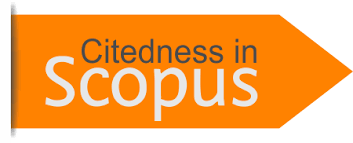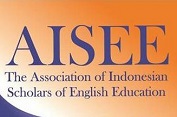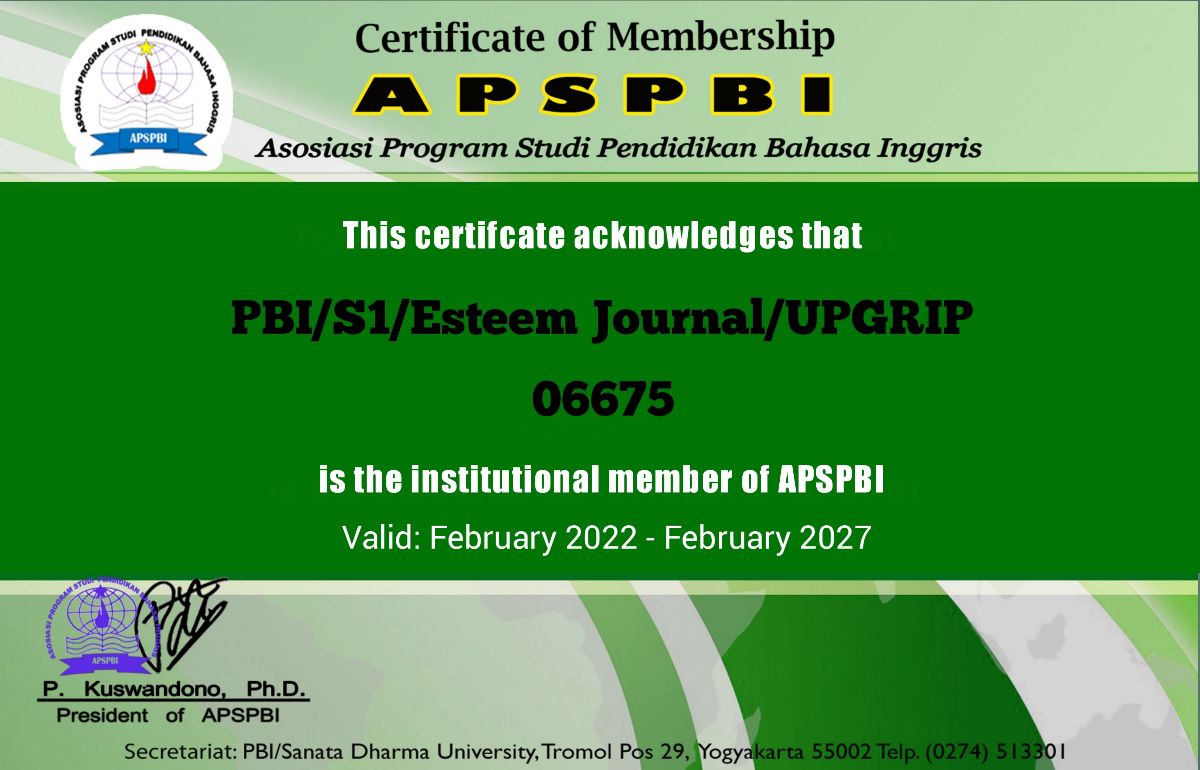THE EFFECTIVENESS OF USING TEACHING AIDS ON STUDENT LEARNING OUTCOMES IN INCREASING INTERACTION IN LEARNING
DOI:
https://doi.org/10.31851/esteem.v6i2.12337Keywords:
Effectiveness, Teaching Aids, Learning Outcomes.Abstract
Learning English is generally hindered by the limited use of visual aids. As a result, students' understanding of the English language is not fully achieved, and the learning process becomes less active due to a lack of interaction between teachers and students. Therefore, it is necessary to incorporate teaching aids to enhance student learning outcomes after using unit teaching aids. This research employed an experimental method with a Pretest-Posttest Control Design. The study was conducted in Class V at SDN 69 Palembang, where the VA class served as the control group and the VB class as the experimental group. Data on understanding the concept of measurement were collected from the results of pre and post-tests administered to both groups. The data analysis revealed that the average score of understanding in the control group during the initial test was 54.38%, which increased to 71.04% by the end of the test. On the other hand, the average score in the experimental class during the initial test was 52.95%, which improved to 80.23% by the end of the test. Therefore, the effective use of unit teaching aids benefited the Class V students at SDN 69 Palembang.
References
Ahmad Syafi'i, TM (2018). Study of Student Achievement in Various Aspects and Influencing Factors. Journal of Educational Communication, vol.2 no.2, 115-123.
Ahmad, US (2018). The Effectiveness of Using Teaching Aids to Increasing Student Achievement in Building Materials on Flat Side Spaces (Cubes and Blocks). Variant Journal, 82-91.
Aisah, Narinda, & Pratiwi, WD (2021). The Effectiveness of Distance Learning for UNSIKA Students During the Covid-19 Pandemic. Journal of Indonesian Language and Literature Education, 67-72.
Banu, D. (2022). Improving Learning Outcomes of Grade V Oesusu Elementary School Students in the Material of Cubes and Blocks Using Unit Cube Teaching Aids Assisted by Animation Media. Haumeni Journal of Education, 9-19.
Dina Arina, E. s. (2020). Development of Interactive Multimedia for Building Volume Learning in Class V Elementary Schools. Journal of Scientific Education, 169-175.
Gasong, D. (2018). Learning and Learning. Yogyakarta: CV Budi Utama.
Gonzalez, M. (2018). The Importance of English in Education. In Language Education: Integration, Innovation, Interaction (pp. 15-23). Publisher.
Hope, IA (2018). The Effectiveness of Village Financial Management in Sijungkang Village, East Angkola District, South Tapanuli Regency. Journal of Da'wah Science and Village Community Development, 42-54.
Ilmiyah, NH, & Sumbawati, MS (2019). The Effect of Kahoot Media and Learning Motivation on Student Learning Outcomes. Journal of Information Engineering and Educational Technology, 46-50.
Juliatun, DD (2022). Application of Model Example Non Example On. Educational Scientific Journal, 40-48.
Mega Rahmawati, ES (2019). Teachers as facilitators and student learning effectiveness. Journal of OFFICE MANAGEMENT EDUCATION, 49-54.
Mulyadi, YES (2019). Efforts to Improve Student Learning Outcomes Using Autograph Media Material for Flat Sided Spaces (Brsd) in Class VIII Students in Private Kuala, Kuala District. Noble Bell, 94-105.
Nila Kesumawati, IA (2018). Educational Research Parametric Statistics. Palembang: NoeFikri Offset.
Nur Kharisma, AE (2022). Development of a Listening Skills Test Instrument for Grade IX Junior High Schools. Journal of PAJAR (Education and Teaching), 132-139.
Downloads
Published
Issue
Section
License
Copyright (c) 2023 Kunci Ariani, Marleni Marleni

This work is licensed under a Creative Commons Attribution-NonCommercial-ShareAlike 4.0 International License.
Copyright Notice
Authors who publish with this journal agree to the following terms:
In order to assure the highest standards for published articles, a peer review policy is applied. In pursue of the compliance with academic standards, all parties involved in the publishing process (the authors, the editors and the editorial board and the reviewers) agree to meet the responsibilities stated below in accordance to the Journal publication ethics and malpractice statement.
Duties of Authors:
- The author(s) warrant that the submitted article is an original work, which has not been previously published, and that they have obtained an agreement from any co-author(s) prior to the manuscript’s submission;
- The author(s) should not submit articles describing essentially the same research to more than one journal;
- The authors(s) make certain that the manuscript meets the terms of the Manuscript Submission Guideline regarding appropriate academic citation and that no copyright infringement occurs;
- The authors(s) should inform the editors about any conflict of interests and report any errors they subsequently, discover in their manuscript.
Duties of Editors and the Editorial Board:
- The editors, together with the editorial board, are responsible for deciding upon the publication or rejection of the submitted manuscripts based only on their originality, significance, and relevance to the domains of the journal;
- The editors evaluate the manuscripts compliance with academic criteria, the domains of the journal and the guidelines;
- The editors must at all times respect the confidentiality of any information pertaining to the submitted manuscripts;
- The editors assign the review of each manuscript to two reviewers chosen according to their domains of expertise. The editors must take into account any conflict of interest reported by the authors and the reviewers.
- The editors must ensure that the comments and recommendations of the reviewers are sent to the author(s) in due time and that the manuscripts are returned to the editors, who take the final decision to publish them or not.
Authors are permitted and encouraged to post online a pre-publication manuscript (but not the Publisher final formatted PDF version of the Work) in institutional repositories or on their Websites prior to and during the submission process, as it can lead to productive exchanges, as well as earlier and greater citation of published work (see The Effect of Open Access). Any such posting made before acceptance and publication of the Work shall be updated upon publication to include a reference to the Publisher-assigned DOI (Digital Object Identifier) and a link to the online abstract for the final published Work in the Journal.





























